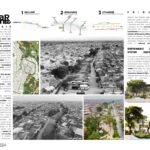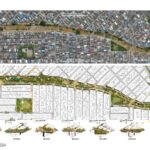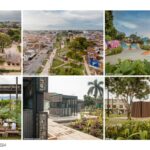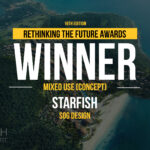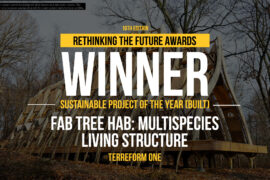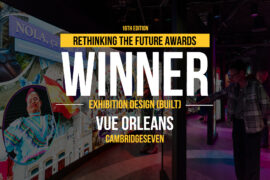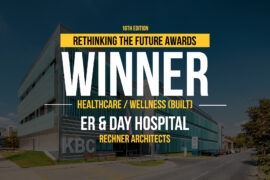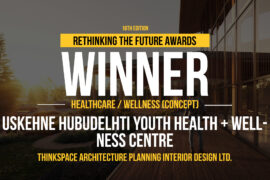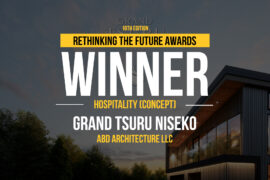The Bulevar de Oriente project is situated in the 14th commune, east of Santiago de Cali, between Transversal 103 with Street 96 and Street 73 with Transversal 73, encompassing the neighborhoods of Alfonso Bonilla Aragón and Marroquín 2. The intervention area spans 47,961 square meters, equivalent to 18 blocks of public space.
Rethinking The Future Awards 2024
First Award | Urban Design (Built)
Project Name: Bulevar del Oriente
Category: Urban Design (Built)
Studio Name: Alcuadrado Arquitectos SAS
Design Team:
DESIGNERS:
ALCUADRADO ARQUITECTOS S.A.S
Arq. Luisa Arango Vásquez,
Arq. Luisa Aponte Morales,
Arq. Laura Núñez Rojas,
Arq. Alexander Espinosa Pai,
TEAM:
Arq. David Rodríguez,
Ing. Monica Jaramillo,
Arq. Ángela María Ortega Ante,
Arq. Carlos Andrés Silva Zuñiga,
Arq. Sara Marcela Rivera Chila,
Arq. Sonia M. Delgado,
Arq. Valentina Estupiñán Nicholls,
Arq. Ana María Hernández A,
Arq. Tatiana Cortez L,
Arq. Marcela Salcedo,
Arq. Jonatan Cruz,
Arq. Yisela Cardona,
LANDSCAPE CONSULTANTS
Epífita
Ing. Maria Leonor Bayona Esguerra,
Ing. Diego Escobar Rivero,
Ing. Johanna Arango Vasquez,
SITE SUPERVISION:
Arq. Carlos Andrés Silva Zúñiga,
Arq. Ángela María Ortega Ante,
Arq. Gustavo Barco Isaza.
Area: 47059 m2
Year: 2023
Location: Cali, Colombia
Consultants: Structural design: JFK ingeniería
Electrical design: OBRASEL
Hydro-sanitary design: GEAM
Topographic: GEOSOLUCIONES DAJ S.A.S.
Bioclimatic design: La-b
Photography Credits: Mauricio Carvajal, Andrés Silva
Render Credits:
Other Credits: Secretaría de vivienda social y hábitat, Alcaldia de Santiago de Cali, Empresa de Desarrollo y Renovación Urbana E.I.C.E.
Builder: Consorcio Mejoramiento Hábitat
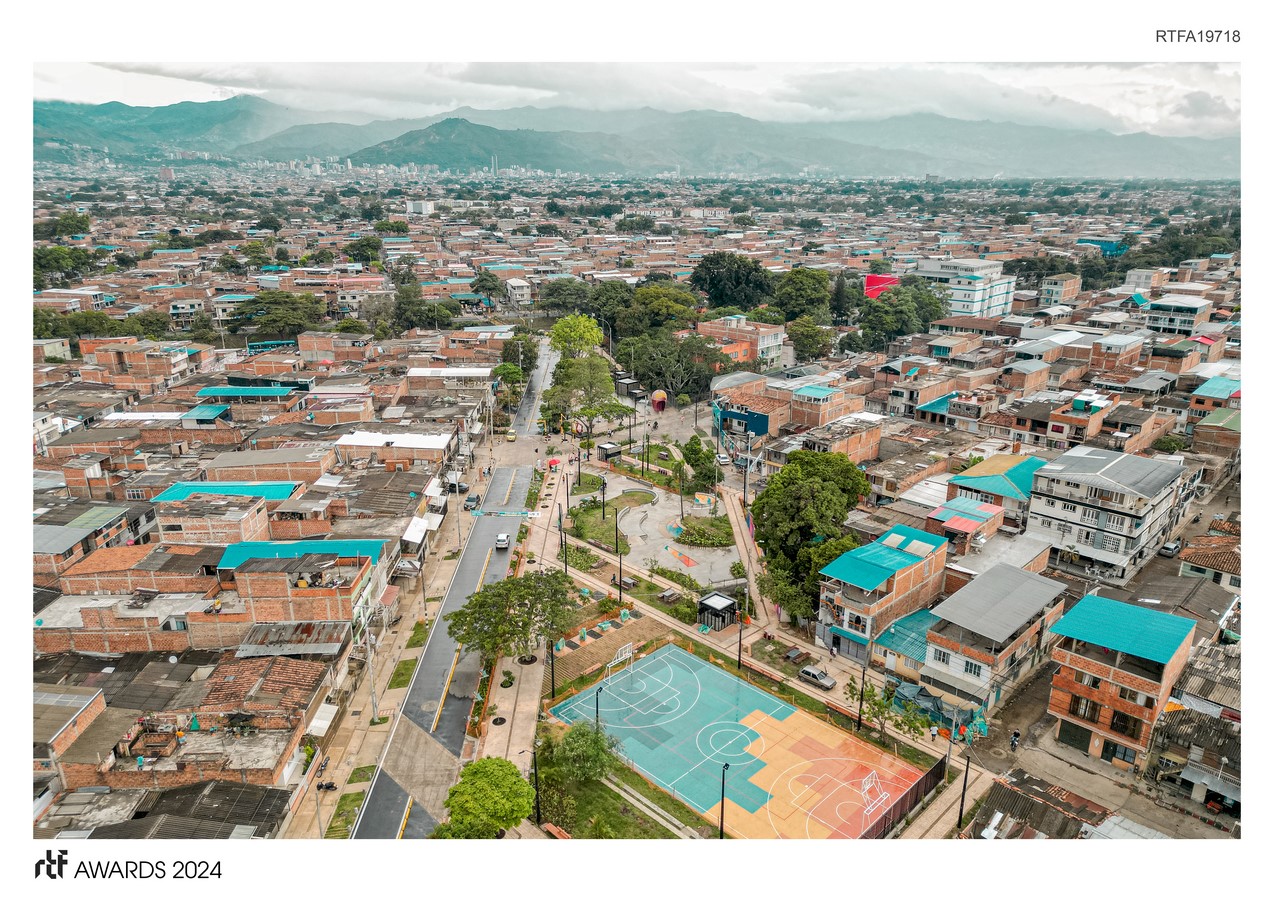
With a predominantly Afro-descendant and Mestizo population, it benefits 31 IDHD (Incomplete Human Development Settlements), comprising 45,000 households with over 130,000 inhabitants. It is understood that the transformation of social capital around the care and protection of common space leads to healthy economic and urban development.

The site, once a body of water transformed into a rainwater channel, evolved through use into a wastewater channel, and a repository for garbage and pollution, ultimately becoming a site of urban, social, and environmental segregation. It is in this location where a patch of land and mud was identified, allowing for the emergence of one of the (5) five parks for life.
A “Thread of Experiences and Lived Stories” stretches longitudinally for 1.2 km through 6 scenarios with a narrative of tales that encapsulate the (3) structured principles: Reclaim, Integrate, and Energize. These principles emanated from social and community work, along with technical territory diagnostics.
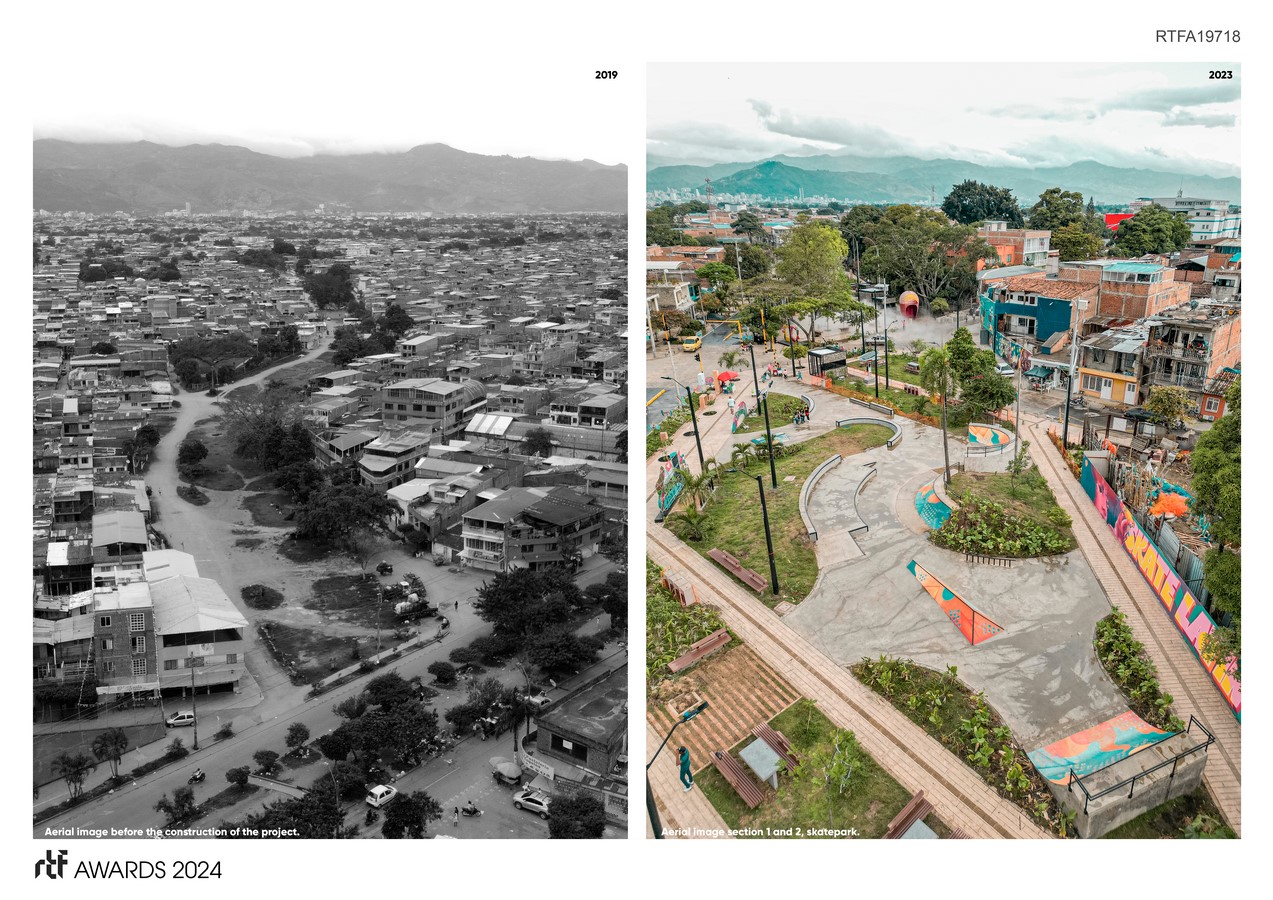
Parks materialize when society reclaims environmental memory, integrates daily activities through urban connections, and harmonizes its calendar of human dynamics with the environmental component, all within the framework of technology and innovation.
The project, in its programming and proposal of scenarios, responds to the needs expressed by the inhabitants: Culture and Art: open pavilions for artistic or cultural presentations, library modules, educational furniture, artistic murals on neighbors’ facades; Sports: multipurpose courts, soccer field, skatepark track, sports furniture; Economic: commercial modules, areas or terraces for future enterprises; Ecological and Environmental: green areas along routes, urban gardens, among others. Public space includes trails, squares, contemplation areas, among others.
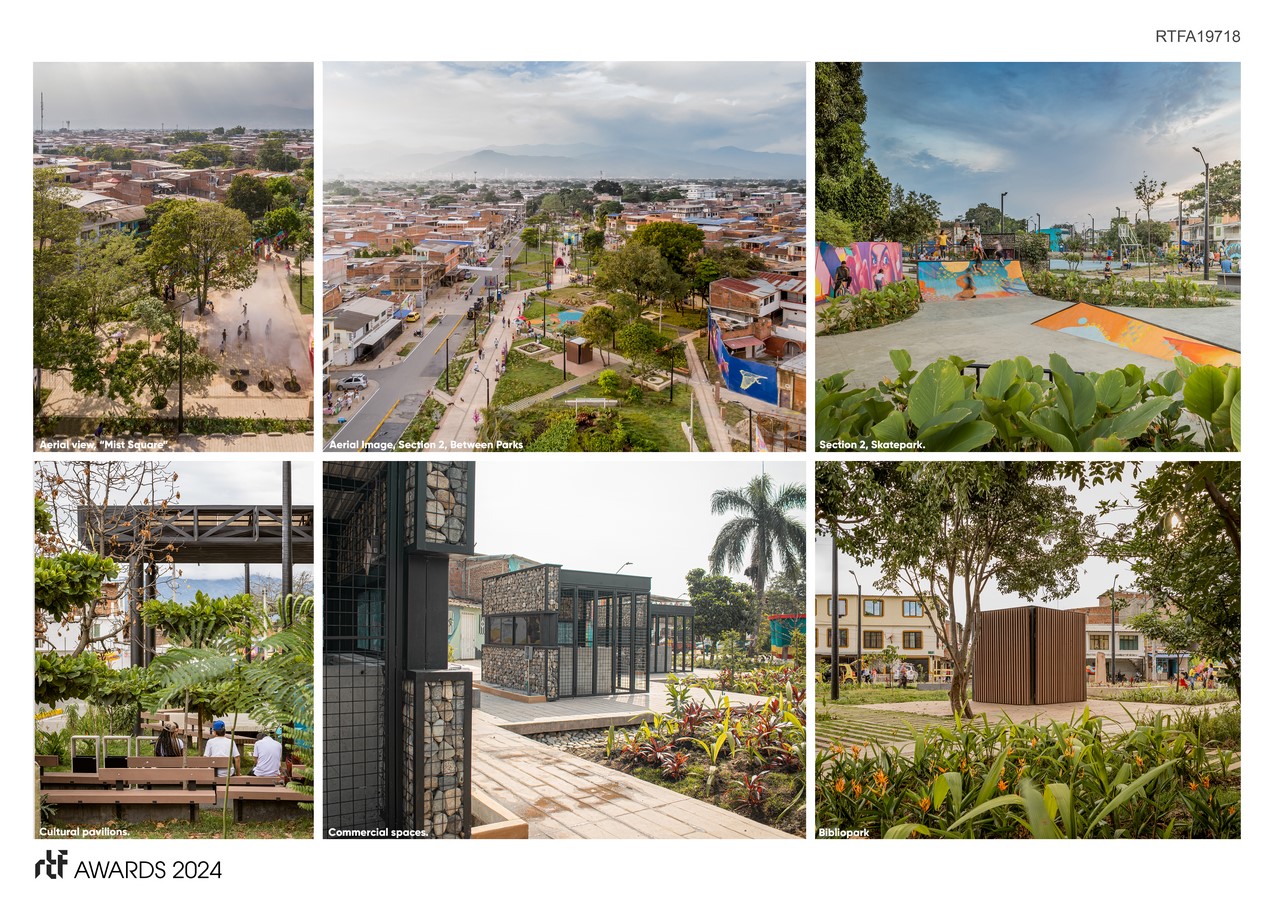
The Bulevar de Oriente project is notable for its crucial cross-sectional component, where the active involvement of local communities has proven indispensable in all phases, ranging from collaborative participation in design consolidation workshops to the execution and ongoing operation stages. This integrative dynamic has given rise to a novel knowledge-sharing platform led by residents, fostering cultural engagement through dance workshops, urban gardens, and other activities supported by institutional entities. Artistic expression comes to fruition in a gallery of murals adorning the facades of residents, the outcome of a call aimed at infusing color, life, and art into the boulevard. The intervention of 58 murals, crafted by local artists, has metamorphosed the boulevard into a symbol of dignity for a marginalized community, affording them the opportunity to believe, dream, and articulate their expressions.
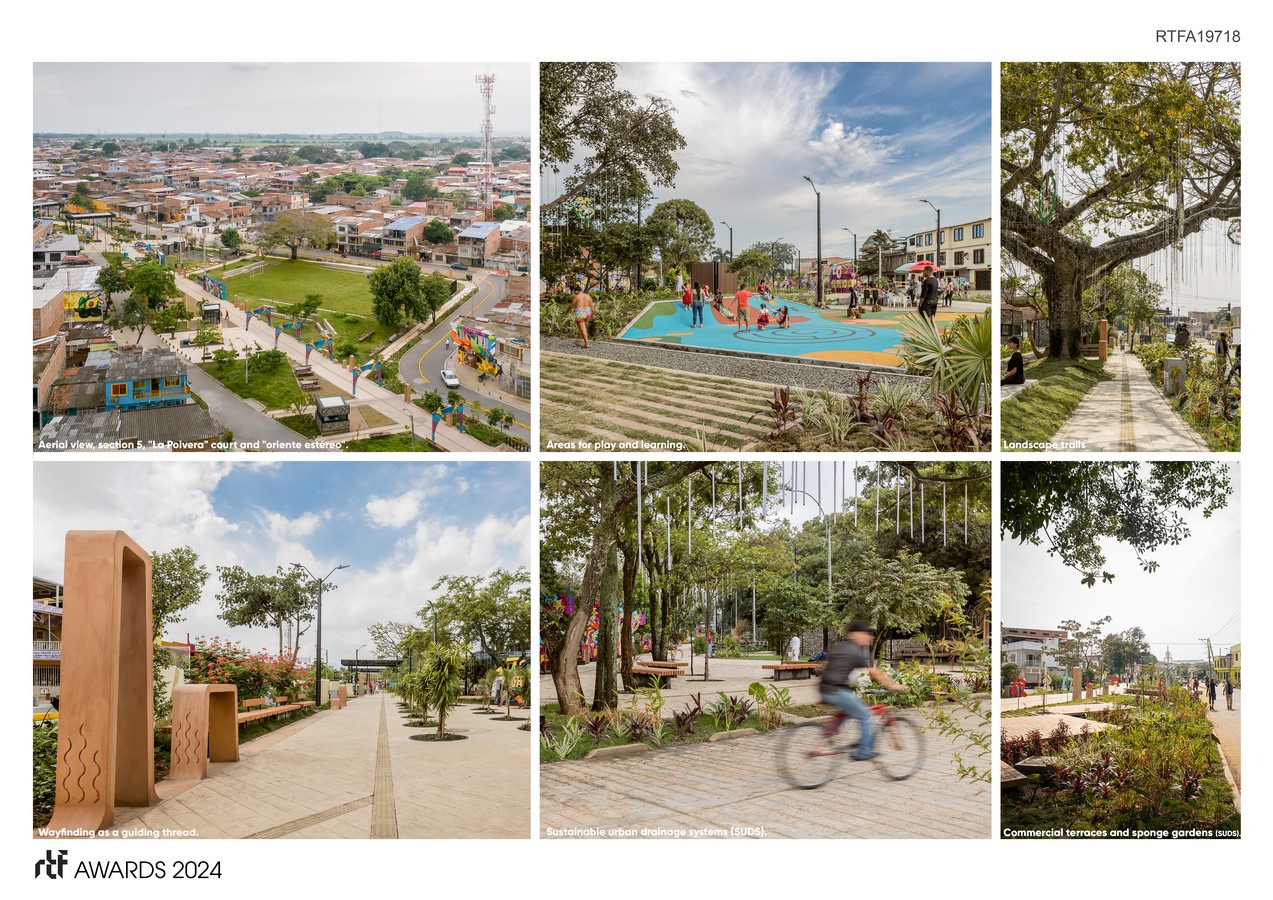
The vision of creating a park for the popular neighborhoods of Cali expands by integrating sustainable practices, such as the use of Construction and Demolition Waste (CDW) in the design. The Eastern Boulevard employs techniques that include recycled CDW materials in concrete, wood, and aggregates, demonstrating a commitment to environmental and social innovation for community sustainable development.



